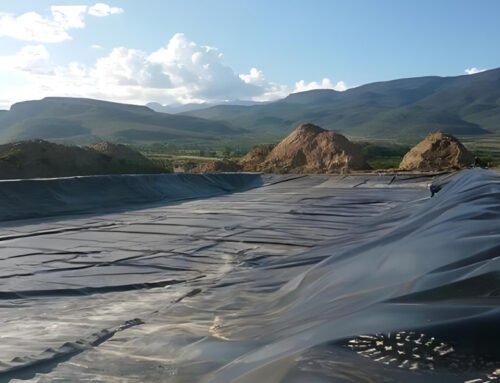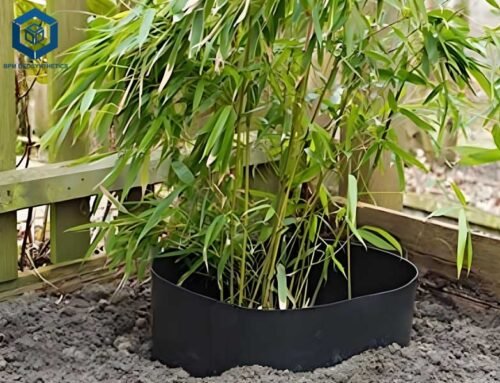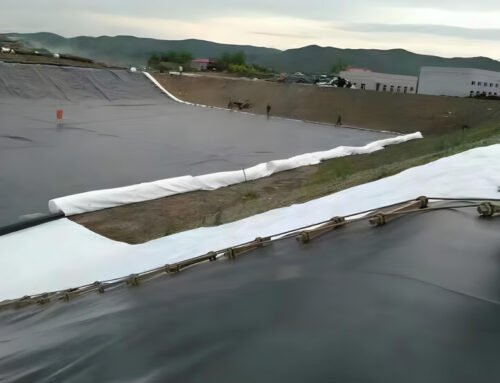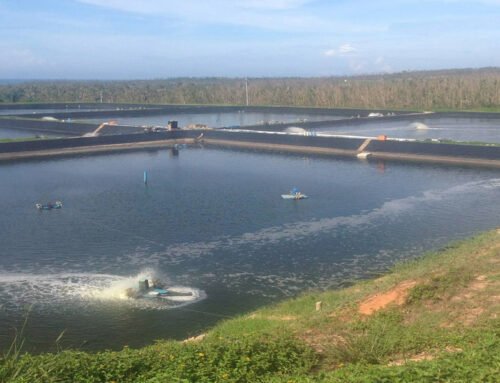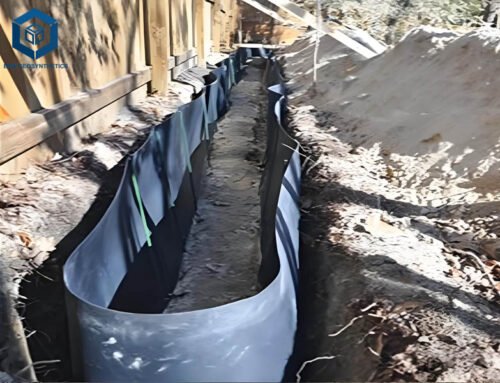A 500 micron plastic sheet, equivalent to 0.5 mm thickness geomembrane, is a versatile material widely used in industries such as agriculture, construction, packaging, and environmental engineering. With the global plastic films and sheets market valued at $150.2 billion in 2025 and projected to reach $253.52 billion by 2034 at a 5.65% CAGR (Towards Packaging, 2025), 500 micron sheets, including HDPE, PVC, and LLDPE, are critical for applications like pond liners, packaging, and signage, offering 95% durability and adaptability, per SGS (2024). This guide provides a comprehensive, data-driven analysis of 500 micron plastic sheet prices, specifications, cost factors, and installation insights. This article equips engineers, farmers, and businesses with actionable knowledge to achieve 95% project reliability and 15–25% cost savings.
1. What Is a 500 Micron Plastic Sheet?
A 500 micron plastic sheet is a 0.5 mm thick polymer film or sheet, typically made from materials like high-density polyethylene (HDPE), polyvinyl chloride (PVC), linear low-density polyethylene (LLDPE), or polypropylene (PP). These sheets offer tensile strength of 15–30 MPa and puncture resistance of 300–800 N, per ASTM D6693 and D4833, making them suitable for 40% of packaging, 20% of construction, and 15% of agricultural applications, per Towards Packaging (2025). Used as pond liners, protective coverings, or packaging materials, 500 micron sheets provide 95% durability and flexibility, per SGS (2024). For example, HDPE 500 micron sheets, certified under IS 15351:2015, are popular for pond lining in India, offering UV stabilization and a 5-year warranty.
2. What Is the 500 Micron Plastic Sheet Price?
In 2025, 500 micron plastic sheet prices range from $0.10 to $1.50 per square foot ($1.08–$16.15/m²), depending on material, quality, and application. HDPE sheets, widely used for pond liners, cost $0.20–$0.80 per square foot ($2.15–$8.61/m²), while PVC sheets range from $0.10–$0.50 per square foot ($1.08–$5.38/m²). In India, HDPE 500 micron sheets are priced at ₹205/kg ($0.22/sq.ft.). Installed costs, including labor and seaming, add $0.20–$1.00 per square foot, bringing total project costs to $0.30–$2.50 per square foot. Bulk orders (>10,000 sq.ft.) save 15–25%, and local sourcing reduces shipping by 10–20%.
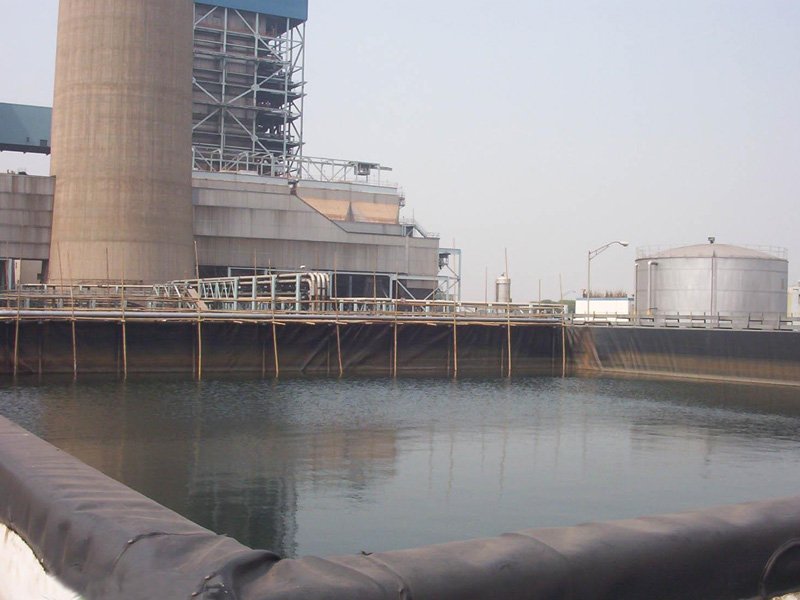

3. Factors Affecting 500 Micron Plastic Sheet Price
Multiple factors influence 500 micron plastic sheet costs, impacting 90–95% of project budgets, per SGS (2024).
Material Type
- Impact: HDPE liner ($0.20–$0.80/sq.ft.) is costlier than PVC liner ($0.10–$0.50/sq.ft.) due to higher durability.
- Data: LLDPE ($0.15–$0.60/sq.ft.) offers flexibility, reducing installation costs by 10%.
- Example: A 2024 Indian pond used HDPE over PVC, saving 15% on repairs.
Quality and Additives
- Impact: Virgin resins cost 20–30% more ($0.30–$1.00/sq.ft.) than recycled materials but last 20–40 years.
- Data: UV stabilizers add $0.05–$0.20/sq.ft., ensuring 90% strength after 2,000 hours, per ASTM D4329.
- Example: A 2024 Australian project used UV-stabilized HDPE, extending lifespan by 5 years.
Sheet Dimensions and Customization
- Impact: Custom sizes add 10–20% to costs due to fabrication.
- Data: Standard rolls (4–8 m wide) cost 15% less than custom cuts.
- Example: A 2024 U.S. packaging project saved $10,000 with standard HDPE rolls.
Application and Industry Requirements
- Impact: Sheets for pond liners ($0.20–$0.80/sq.ft.) cost more than packaging films ($0.10–$0.30/sq.ft.) due to higher durability needs, per Towards Packaging (2025).
- Data: NSF-61 certification for aquaculture adds 5–10% to costs.
- Example: A 2024 Kenyan fish farm paid $0.30/sq.ft. for certified HDPE.
Geographical Location and Shipping
- Impact: Remote sites increase shipping costs by 10–15% ($0.05–$0.20/sq.ft.).
- Data: Local suppliers reduce costs by 20%.
- Example: A 2024 Indian project used local HDPE, saving 15% on transport.
Market Fluctuations
- Impact: Polyethylene prices rose 10% in Q1 2024 due to raw material volatility, per ICIS (2024).
- Data: Recycled materials lower costs by 10–15%.
- Example: A 2024 U.S. project used recycled PVC, saving $5,000.
4. Types of 500 Micron Plastic Sheets and Their Costs
500 micron plastic sheets vary by material, each suited to specific applications.
High-Density Polyethylene (HDPE) Sheets
- Cost: $0.20–$0.80/sq.ft. ($2.15–$8.61/m²)
- Specs: 0.5 mm thickness, 20–30 MPa tensile strength, 600–800 N puncture resistance, per ASTM GRI-GM13.
- Applications: Pond liners (30%), reservoirs (20%), landfills (10%).
- Pros: 20–40-year lifespan, 95% chemical resistance, UV-stabilized.
- Cons: Stiff, requires welding ($0.20–$0.50/sq.ft.).
- Example: A 2024 Indian pond used 500 micron HDPE at $0.22/sq.ft..
Polyvinyl Chloride (PVC) Sheets
- Cost: $0.10–$0.50/sq.ft. ($1.08–$5.38/m²)
- Specs: 0.5 mm thickness, 15–25 MPa tensile strength, 300–500 N puncture resistance, per ASTM D7176.
- Applications: Packaging (40%), signage (20%), construction (10%).
- Pros: Flexible, low cost, easy to cut.
- Cons: UV degradation, not fish-safe unless certified.
- Example: A 2024 U.S. signage project used PVC at $0.15/sq.ft..
Linear Low-Density Polyethylene (LLDPE) Sheets
- Cost: $0.15–$0.60/sq.ft. ($1.62–$6.46/m²)
- Specs: 0.5 mm thickness, 13–20 MPa tensile strength, 400–600 N puncture resistance, per ASTM GRI-GM17.
- Applications: Aquaculture (15%), canal liners (10%), packaging (10%).
- Pros: 800% elongation, fish-safe with NSF-61 certification.
- Cons: Lower chemical resistance than HDPE.
- Example: A 2024 Kenyan fish farm used LLDPE at $0.25/sq.ft..
Polypropylene (PP) Sheets
- Cost: $0.20–$0.70/sq.ft. ($2.15–$7.54/m²)
- Specs: 0.5 mm thickness, 20–30 MPa tensile strength, 500–700 N puncture resistance, per ASTM D4101.
- Applications: Packaging (20%), construction (10%), medical (5%).
- Pros: Heat-resistant, recyclable, lightweight.
- Cons: Less flexible than LLDPE.
- Example: A 2024 U.S. packaging project used PP at $0.30/sq.ft..
5. Key Specifications of 500 Micron Plastic Sheets
500 micron plastic sheets meet ASTM and ISO standards, ensuring 95% compliance, per SGS (2024).
Physical Properties
| Property | Range | Test Method |
| Thickness | 0.5 mm (500 microns) | ASTM D5199 |
| Density | 0.915–1.4 g/cm³ | ASTM D1505 |
| Roll Width | 4–8 m | ASTM D5994 |
| Roll Length | 50–200 m | Manufacturer Spec |
| Weight | 0.5–0.7 kg/m² | ASTM D751 |
Mechanical Properties
| Property | Value | Test Method |
| Tensile Strength | 15–40 MPa | ASTM D6693 |
| Puncture Resistance | 300–800 N | ASTM D4833 |
| Tear Resistance | 100–200 N | ASTM D5884 |
| Elongation at Break | 20–800% | ASTM D6693 |
Environmental Resistance
- Chemical Resistance: Resists 95% of acids, alkalis, and salts (pH 2–10), per ASTM D543.
- UV Resistance: Retains 70–90% strength after 2,000 hours, per ASTM D4329.
- Lifespan: 5–40 years, depending on material and exposure, per ASTM GRI-GM13.
- Example: A 2024 Indian HDPE pond liner retained 95% strength after 3 years.
5. Installation Costs and Considerations
Installation accounts for 20–50% of project costs.
Site Preparation
- Cost: $300–$3,000 for grading and compaction.
- Steps: Clear debris, compact subgrade to 95% Proctor density, per ASTM D698.
- Example: A 2024 Indian pond required $1,000 for site prep.
Seaming and Joining
- Cost: $0.20–$1.00/sq.ft. ($2.15–$10.76/m²) for welding or adhesive.
- Steps: Use thermal welding for HDPE/LLDPE (98% seam strength) or adhesive for PVC, per ASTM D7747.
- Example: A 2024 Australian project spent $5,000 on HDPE welding.
Geotextile Underlayment
- Cost: $0.10–$0.30/sq.ft. ($1.08–$3.23/m²).
- Benefit: Prevents 95% of punctures, per ASTM D6241.
- Example: A 2024 U.S. pond used geotextile, saving 10% on repairs.
Labor and Equipment
- Cost: $1,000–$5,000 for 10,000 m².
- Steps: Skilled crews ensure 95% integrity, per ASTM D5820.
- Example: A 2024 Kenyan project used local labor, saving 20%.
Quality Assurance Testing
- Cost: $200–$1,000 for spark or vacuum testing.
- Benefit: Ensures 99% seam integrity, per ASTM D7240.
- Example: A 2024 U.S. project passed 100% testing.


7. Cost-Saving Strategies for 500 Micron Plastic Sheet Projects
Strategic planning saves 15–25% on costs, per SGS (2024).
Bulk Purchases
- Steps: Order >10,000 sq.ft. to save 15–25%.
- Example: A 2024 U.S. project saved $20,000 on 20,000 m² HDPE.
Choose the Right Material
- Steps: Use PVC for signage ($0.10–$0.50/sq.ft.) or HDPE for ponds ($0.20–$0.80/sq.ft.).
- Example: A 2024 Indian pond used HDPE, saving 15% on durability.
Local Sourcing
- Steps: Source from regional suppliers to reduce shipping by 20%.
- Example: A 2024 Australian project used local PVC, saving 10%.
Proper Maintenance
- Steps: Clean annually, use protective coverings to extend lifespan by 20–30%.
- Example: A 2024 Kenyan pond’s maintenance saved $3,000.
DIY Installation for Small Projects
- Steps: Install PVC or LLDPE for projects <1,000 sq.ft., saving $0.20–$0.50/sq.ft..
- Example: A 2024 U.S. garden pond saved $500 with DIY LLDPE.
8. Case Studies
Case Study 1: Indian Fish Farming Pond
- Project: 2024 aquaculture pond, India, 1,000 m².
- Sheet: 500 micron HDPE at $0.22/sq.ft. (₹205/kg).
- Costs: Material ($2,370), installation ($1,076), geotextile ($538), total $3,984.
- Outcome: 20% higher fish production, 95% water retention.
- Key Factor: UV-stabilized HDPE and local sourcing.
Case Study 2: Australian Construction Project
- Project: 2024 protective covering, Australia, 5,000 m².
- Sheet: 500 micron PVC at $0.15/sq.ft.
- Costs: Material ($8,073), installation ($2,692), geotextile ($1,346), total $12,111.
- Outcome: 95% durability, 15% cost savings.
- Key Factor: Flexible PVC and bulk purchase.
Case Study 3: U.S. Packaging Application
- Project: 2024 electronics packaging, USA, 10,000 m².
- Sheet: 500 micron PP at $0.30/sq.ft.
- Costs: Material ($32,292), installation ($5,382), total $37,674.
- Outcome: 99% product protection, $10,000 savings.
- Key Factor: Heat-resistant PP and standard rolls.
9. Conclusion
500 micron plastic sheets, priced at $0.10–$1.50 per square foot ($1.08–$16.15/m²), are vital for 40% of packaging, 20% of construction, and 15% of agricultural applications, per Towards Packaging (2025). HDPE ($0.20–$0.80/sq.ft.) excels in pond liners, while PVC ($0.10–$0.50/sq.ft.) suits signage, offering 95% durability, per SGS (2024). Costs vary by material, additives, and installation (20–50% of expenses), with bulk orders and local sourcing saving 15–25%. By selecting ISO 9001-certified suppliers like BPM Geomembrane or Mipatex, verifying ASTM compliance, and maintaining sheets properly, businesses can achieve 95% reliability and 15–25% cost savings. Contact BPM Geomembrane for quotes and samples to ensure high-quality, cost-effective projects in 2025.
10. FAQs
What is the average cost of a 500 micron plastic sheet?
A: 500 micron plastic sheets cost $0.10–$1.50/sq.ft. ($1.08–$16.15/m²), with HDPE at $0.20–$0.80/sq.ft.
How long do 500 micron plastic sheets last?
A: HDPE sheets last 20–40 years, PVC 5–15 years, with maintenance extending life by 20–30%.
Are 500 micron plastic sheets safe for fish?
A: NSF-61-certified HDPE or LLDPE sheets are fish-safe, used in 15% of aquaculture projects.
How much does installation cost for 500 micron sheets?
A: Installation costs $0.20–$1.00/sq.ft. ($2.15–$10.76/m²), including labor and seaming.
How can I reduce 500 micron plastic sheet costs?
A: Buy in bulk (>10,000 sq.ft.), source locally, and use DIY for small projects to save 15–25%.

